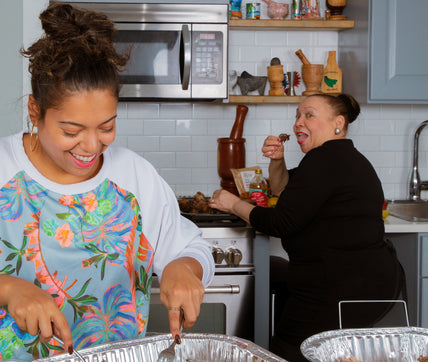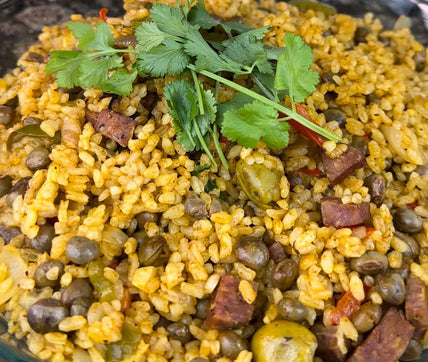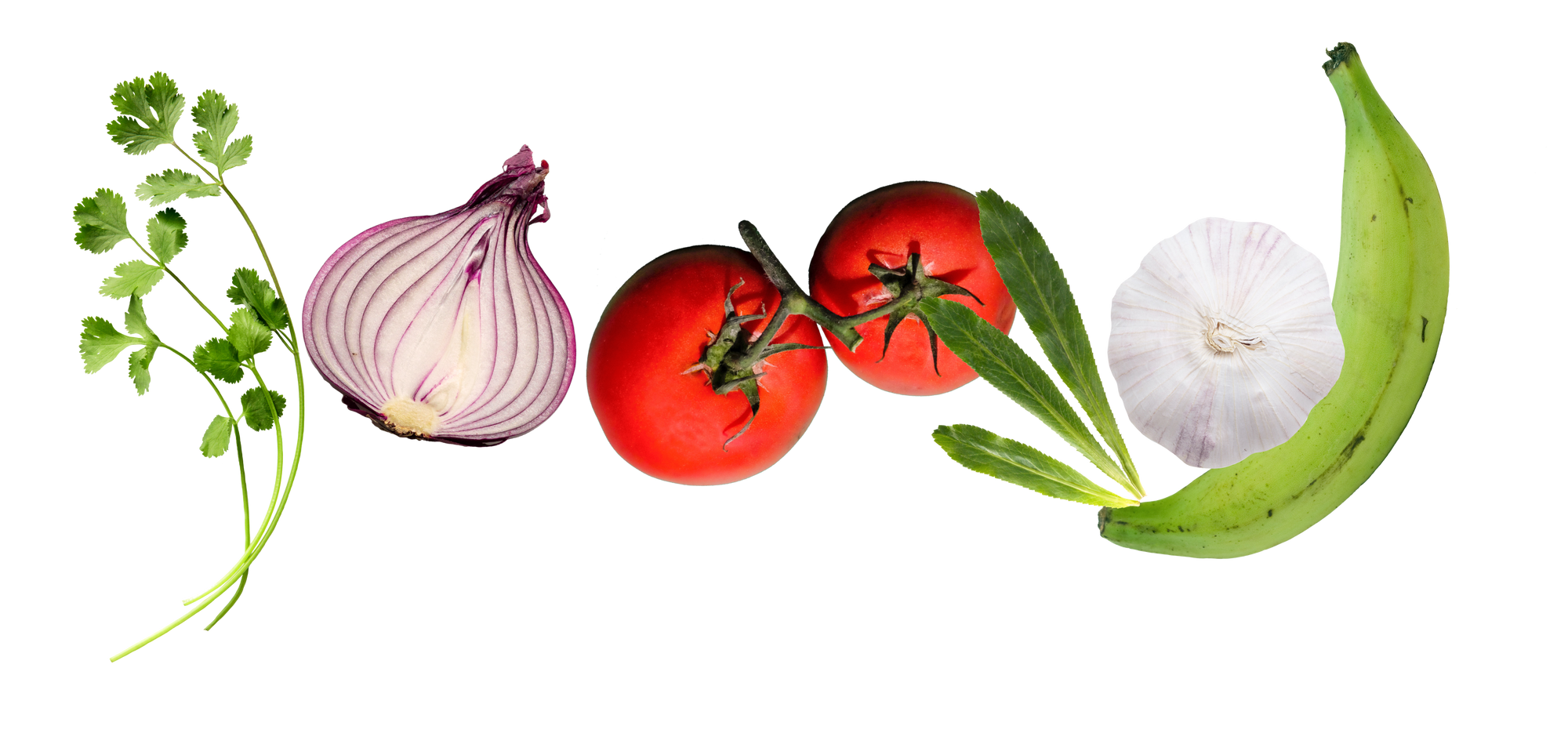
Flavor Profiles with Yaffa S. Santos #012
Meet Yaffa Santos, Dominican home chef, writer, and author of A Taste of Sage, as she shares her food journey, how cooking inspires her writing, and her deep love for preserving traditional dishes.
Through this series, our aim is to share the stories and work of those who inspire us most here at Loisa - those who bring their own pure flavor to this world and elevate our lives by doing so.
Interview by Johanna Ferreira (@cup_of_johanna)
Yaffa. S. Santos’ 2020 novel, A Taste of Sage, was very much inspired by her own love of cooking and appreciation for Dominican cuisine. But the Dominican-American who grew up in New Jersey and is currently based in Florida, didn’t always know how to cook. In fact, when she married her husband at the age of 19, she couldn’t do much more than boil an egg and prepare sandwiches.
“We got married and were like, wait we have to cook — we can’t eat sandwiches forever,” she tells Loisa laughing. “So we both learned how to cook. We learned together. The way that I learned was watching people. If someone was like I’m going to make arroz con guandules today, I would stand there, watch, and study everything that they did. In fact, when I was writing the recipes for A Taste of Sage, it was so hard for me because I didn’t learn reading recipes. I learned by watching people. There were some dishes where I didn’t even know the measurements because I would always just eyeball it.”
Like many Latinas, Santos learned how to cook with the “watch and taste as you go” philosophy. These days she likes to refer to herself as a home cook and enjoys making meals that hold meaning and significance for her, like the Dominican recipes she grew up eating. Sancocho de rabo (oxtail stew) and mofongo con camarones (shrimp) appear to be some of her specialities. Her very own passion for cooking and tapping into the ancestral recipes of her native island, are very much what inspired the storyline behind A Taste of Sage, which centers on protagonist Lumi Santana, a chef who can perceive a person’s emotions by tasting their cooking. It’s a gift she was blessed with at a very young age that she couldn’t quite decipher until a visit to a curandera ( a traditional healer of Latin American descent). After having to close down her own Dominican Latino fusion restaurant, Santana finds herself having to take a sous chef position at a traditional French restaurant in NYC, owned by a passionate but arrogant male chef who she detest at first but eventually falls for. Many of Santos’ favorite Dominican recipes made their way into the book from pescado de coco (fish in coconut milk) to traditional desserts like majarete.
These days she’s really valuing cooking with healthy and sustainable ingredients. The base of all her meals is her homemade sofrito which she normally prepares with herbs like garlic, onions, and cilantro. She also occasionally prepares her own home-made adobo.
“When I first started cooking, I was around 19-years-old and I would buy all my seasonings already prepared — even my sofrito. Then I started paying attention to the ingredients and was like well, I can just make my own adobo at home and I can make my own sazon,” she says. “I started to think about what ingredients are in adobo that I love. I got salt, I got garlic powder, I got black pepper, I got bija, I got dried oregano and maybe I can add in some paprika. Even till this day sometimes I'll mix my spices and prepare my own seasonings and leave it on the side right before I start cooking.

What brought you to what you do today?
I always liked writing. I always processed my thoughts through writing. Even before I was writing fiction, it felt like there was a lot going on for me emotionally and if I wasn’t really sure of what it was I was feeling, I would just start to write it down. Writing has always been an important tool for me in processing my thoughts and organizing my mind around different topics. I always loved reading fiction and at some point there was a jump off, where I was like I could write it too! As much as I was a consumer of fiction, I could also be a provider — so to speak.
How did you develop this special connection with cooking?
The school that I attended growing up was mostly white. I was one of the few Afro-descendant people there. It was in Northern New Jersey and I got a lot of negative feedback about my body. When I began to enter my early adulthood, I started to struggle with disordered eating. I was constantly dieting because unfortunately, with the media and the people around me, I bought into those negative messages about my body. It was learning to cook that really changed my relationship with food. With the dieting I had become afraid of food and I was trying to eat less. Also, spending time in Santo Domingo helped me a lot because I was always talking to family about food. For example, I remember this one time when I was talking to family about what you need to do to be healthy and a few people were saying well, if you're a woman you need to eat a lot to nourish yourself. I remember being so surprised to hear that because back in the states women are told that in order to be healthy you need to eat less. Just being around people where different bodies were being celebrated versus constantly hearing you need to be thin. It helped me break the connection. I got to a point where I was like I don’t care what’s being displayed in the media. I don’t care what people say about food. Food is abundance and there’s a way for me to be a steward of that abundance as opposed to running from it or having an unhealthy relationship with it.

How has cooking influenced your writing?
It’s influenced my writing in that I discovered that I enjoy writing about cooking. It was something I was doing on a regular basis, so it kind of flowed into my writing. Whereas I had started not writing about cooking but I think what happened was that I was already cooking and it just organically flowed into my story, that wound up being about a Latina chef.

What’s inspiring you most these days?
I have a new project I’m working on and the main character is a ciguapa, which is a mythical Dominican creator. One of the things I learned about the ciguapa, that I didn’t know prior, was that in some legends the ciguapas are addicted to butter. That worked in really well for me with the bakery narrative. The book is also about a baker and people in the baking industry. There’s an aspect of the main character being a ciguapa and all the women in her family. It’s like a multigenerational thing where all the women are ciguapa. And there’s also an aspect of punk rock. She’s not into merengue and bachata and gets push back from her family about that. The story is a lot about feeling like you can’t fit in anywhere and self-love because it’s ultimately about her self-love journey and there’s a romantic element also. But basically it’s mostly about her finding somebody who encourages her to love herself.

What’s a dish that transports you to a certain place no matter where you have it?
The first thing that comes to mind is chivo guisado — stewed goat. My family and I have had it a lot in the south of the Dominican Republic. We’ve traveled there a lot for family vacations and for some reason we’d always get chivo. They say that goats eat a lot of oregano and taste like oregano naturally especially in el sure. Even when I have chivo in another state or another country, it takes me back to that — but only if it’s good.
What do you love the most about Dominican food and what’s your favorite Dominican dish?
I think there’s a real balance of flavors. I don’t feel like there’s anything too astringent, too bitter, or too sweet, which would bother me. It feels really balanced. A favorite dish? Well, I think it’s going to have to be a whole meal versus one dish. I’m going to have to go with rabo guisado (stewed oxtail) with arroz con guandules (rice with pigeon peas), platanos (plantains), and ensalada rusa (Dominican Russian potato salad).
I also disagree with the idea that some people have around Dominican food being unhealthy and unsophisticated. There are so many healthy foods within Dominican cuisine and I think that you just have to be educated about it. For instance, the cherry in Dominican Republic is very different from the cherries we find here. It’s called the acerola cherry. It’s one of the most vitamin C rich fruits that’s available in all of the northern hemisphere. Guanabana (soursop) is supposed to be one of the most cancer-fighting fruits available — that’s one of the best out there. Guayaba also has a ton of great properties. If you blend it with red pepper it’s great for immunity. All these things are so good for us. But we’re accustomed to the American paradigm of healthy food, so we’re out in the world and people are like you should eat more kale, you should eat more spinach and we can but we also have our own greens like berro (watercress) which has vitamin K and iron. Our ensalada hervida is so healthy. The dressing is made with red onion — red onion is a prebiotic, which means it fights the bad bacteria to let the good bacteria in your intestines flourish. Our vegetables are healthy. It’s all about how we frame things. It’s about knowing what the foods are and educating ourselves about what their properties are.
What have you been doing to keep your family healthy during this pandemic?
The Dominican té de cebolla is one remedio I’ve been preparing a lot. We make it with red onion along with flor de sangre de Christo (Hibiscus flower), red apples, and ginger. I had times when I felt like my chest was tight and I would make this this tea and feel instantly better.
What are you excited to cook up next?
I’ve been wanting to make liquor-infused arroz con leche cupcakes. I think all this baking has a lot to do with the next book I’m working on. I’m thinking a lot about what the characters are baking but so far they’ve come out kind of gummy. I really want to have one that’s lime infused and one that’s coconut flavored. I want them to have Caribbean flavors where you can still taste the alcohol -- so let’s see!
Connect with Yaffa on Instagram @yaffasantos.author
Shop her book A Taste of Sage



